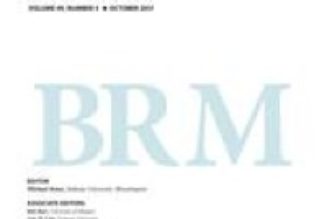
That doesn’t mean that this is all that the text means. The Church historically speaks of the “four senses” of Scripture (CCC 118). In addition to the literal sense, there are three spiritual senses. We can see within the biblical text an allegorical meaning (for instance, foreshadowing the coming of Christ), a moral sense (giving us instruction for today), and an anagogical sense (in which we “view realities and events in terms of their eternal significance, leading us toward our true homeland” [CCC 117]). Among the three spiritual senses, the allegorical looks back to the life and ministry of Christ, the moral looks at our lives today, and the anagogical looks at where we’re ultimately headed.
Take the parting of the Red Sea in Exodus 14. What does the text mean? At the most basic level (which is precisely where we ought to begin), it means that God, through Moses, delivered his people from slavery by miraculously parting the Red Sea. That’s the literal sense. But we can also validly see a variety of spiritual meanings in the text as well.
First, we can see it as “a sign or type of Christ’s victory” (CCC 117). What God does for Israel at the Red Sea is a sign pointing us toward what he’ll do for the new Israel at Calvary. It’s also a prefigurement of baptism, a point that St. Paul makes when he says that “our fathers were all under the cloud, and all passed through the sea, and all were baptized into Moses in the cloud and in the sea” (1 Cor. 10:1-2). All of that is reading Scripture allegorically.
But Paul doesn’t stop his reading of Exodus 14 there. The Israelites were “baptized,” and “all ate the same supernatural food and all drank the same supernatural drink” (1 Cor. 10:3), since they ate the manna and drank the water from the rock. Nevertheless, Paul warns, “with most of them God was not pleased; for they were overthrown in the wilderness” (v. 5). To use the modern parlance, the ancient Israelites were “sacramentalized,” but most of them still died in their sins. If that sounds like a warning to modern Catholics, it is. Paul’s immediate takeaway is that “these things are warnings for us, not to desire evil as they did” (v. 6). In other words, the point of Exodus 14 isn’t just to tell us what happened historically. It’s also to tell us how to live and how not to live. That’s the moral sense of Scripture.
Finally, there’s the anagogical sense. In the Exodus journey from Egypt (the place of slavery) to the Promised Land, we see a symbol of our entire lives, as God liberates us from sin and leads us to our heavenly homeland.
Notice that none of these is exclusive: reading the text in any one of these ways doesn’t require you to reject any of the other ways. Affirming that the Red Sea prefigures Christ, or baptism, or our exodus from sin doesn’t require denying that the miracle happened. Quite the contrary: If miracles occurred, and miracles are “signs” (Exod. 7:3; John 2:11), what are they signs of? Answering that takes us from the literal to the spiritual senses.
Perhaps none of this seems particularly controversial, but there are plenty of Protestants who reject this traditional way of reading Scripture. Gordon Fee (professor emeritus of New Testament Studies at Regent College in Vancouver) and Douglas Stuart (professor of Old Testament at Gordon-Conwell Theological Seminary) cowrote How to Read the Bible for All Its Worth as a way of explaining biblical interpretation to a wider audience. In their book, which sold hundreds of thousands of copies and is currently in its fourth edition, they lay out rules for “how the Old Testament narratives are not to be understood.” First among these, they claim:
The Old Testament narratives are not allegories or stories filled with hidden meanings. While there may be aspects of narratives that are not easy to understand, you should always assume that they had meaning for their original hearers. But whatever else, they are not allegories.
So the allegorical reading of the Old Testament, so popular with both the Church Fathers and St. Paul, is against the rules for such Protestants. Nor is it only the allegorical that is disallowed; it’s also the moral. Their second rule says:
Individual Old Testament narratives are not intended to teach moral lessons. The purpose of the various individual narratives is to tell what God did in the history of Israel, not to offer moral examples of right or wrong behavior.
By this analysis, Paul broke the first rule by viewing the Red Sea as an allegory of baptism, and then the second rule for thinking “these things are warnings for us, not to desire evil as they did.” Of course, in a matchup between an apostle and a pair of Protestant seminary professors, the choice is clear. But it’s worth understanding why Paul is right and Fee and Stuart are wrong. St. John gives us the explanation towards the close of his own Gospel (John 20:30-31):
Now Jesus did many other signs in the presence of the disciples, which are not written in this book; but these are written that you may believe that Jesus is the Christ, the Son of God, and that believing you may have life in his name.
In other words, it’s not enough to say the biblical stories were written down because they happened, or because God was sovereign over them. Lots of things happen, and God is sovereign over all of them, yet the vast majority of these things were never recorded in Scripture. These particular events were chosen for a reason. That reason may be to teach us a moral lesson, or to prefigure something coming later in salvation history, etc., but it’s never simply “to tell what God did in the history of Israel.”
To take another example, the Protestant FAQ site Got Questions responded to the question “Can/should we interpret the Bible literally?” by declaring that “not only can we take the Bible literally, but we must take the Bible literally. This is the only way to determine what God really is trying to communicate to us.”
The problem with this position is twofold. First, it rejects three of the four senses of Scripture by declaring the literal the “only way” we can know what God is saying. Or to put it another way, they’ve decreed that the literal is the only way that God is allowed to speak to us . . . despite an abundance of evidence (from the Psalms to the Song of Solomon to Jesus’ parables) that suggests that God is in no hurry to be bound in this way.
The second problem is that it misunderstands the literal sense. As I mentioned at the outset, the traditional meaning of literal is “the meaning conveyed by the words of Scripture and discovered by exegesis, following the rules of sound interpretation” (CCC 116). That plain meaning might be that the author was speaking metaphorically or using a figure of speech. But the modern meaning of literal is “taking words in their usual or most basic sense without metaphor or allegory.”
That’s a big difference: the biblical authors regularly employ figures of speech that aren’t meant to be taken literally in this second, modern sense of literal. Got Questions half-acknowledges this problem but says, “There are figures of speech in the Bible which are not to be taken literally, but those are obvious.” Such confidence is misplaced. If a reading of the Gospels suggests anything, it’s that Jesus’ audiences (be they the apostles or other listeners) found it anything but obvious which times were and weren’t “to be taken literally” in this second sense.
So when it comes to reading your Bible, just remember: take it literally, yes, but don’t be so modern about it.
Join Our Telegram Group : Salvation & Prosperity









